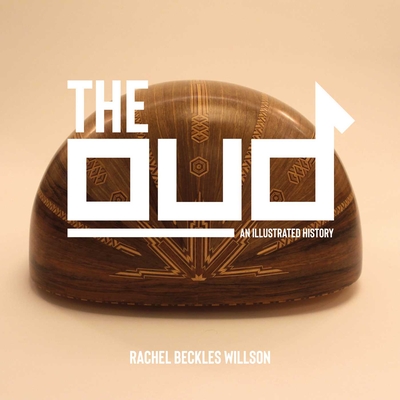You are here
Back to topThe Oud: An Illustrated History (Hardcover)
$40.00
Usually Ships in 1-5 Days
Description
A beautifully-written illustrated history of one of the most important instruments in music cultures of the Middle East and North Africa.
According to a literary tradition of Iraq, the origin of the oud lies in the grief of Lamak, a descendent of Cain, son of Adam. When his 5-year-old son died, Lamak hung the boy’s limp body on a tree, and as time passed, he resolved to build a musical instrument from the remaining bones. He then played it, wept, and sang the first lament; his daughter Sila became an instrument maker. So the oud is a beautiful pear-shaped box, with neck and strings, that makes music, but it can also be a link to the world of storytelling that brings new voices into life.
Today the oud is one of the most important instruments in music cultures of the Middle East and North Africa, and while associated mainly with the Arab world, it is also played in Iran, Turkey and Greece. More recently it has spread into East Africa, numerous countries of Europe, Australia, the Americas, China and Japan.
This book explores the oud’s history and increasingly global lives today. It explores its varied construction over time and place, delves into its place in literature, and reveals its widespread repertoire and immensely diverse players.
About the Author
Rachel Beckles Willson is an award-winning writer and Professor of Intercultural Performing Arts at Codarts University of the Arts in Rotterdam, and the Academy of Creative and Performing Arts at Leiden University, Netherlands. She is an internationally sought-after scholar, multi-instrumentalist, and composer. Her articles on the oud led her to win the Frances Densmore Prize of the American Musical Instrument Society in 2021.
Praise For…
"Musician Beckles Willson (Orientalism and Musical Mission) scrupulously traces the history of the oud—a short-necked, fretless stringed musical instrument—from its first written mention in ancient Persia to the present day. An instrument long associated with bereavement (an early fable holds that a grieving father constructed it from his deceased son’s bones and sinews, “played it, wept, and sang the first lament”), ouds of the past accommodated between four and seven double courses of strings, were often custom-designed for their owners, and were crafted from wood, while modern versions can also be partly fashioned of carbon fiber and have commanded prices up to more than a half-million dollars. Through history, the instrument followed shifting fault lines between East and West: ubiquitous in many Abbasid courts, and played in particular by thousands of women at festive gatherings, the oud was brought by Arab people to southern Europe between the ninth and 13th centuries. From there, it spread northward, and eventually became the lute. In the 20th century, following the Ottoman Empire’s dissolution and the Armenian Genocide, refugees carried the instrument around the world. Generously illustrated and embedded with QR codes that link to YouTube videos of oud players in action, this is both a rich cultural history and a thoughtful analysis of the shifting global dynamics that gave the oud its reach. Music lovers will be captivated."
"Willson is equal parts musician and scholar, which positions her perfectly to tell the complex story of the oud, a stringed instrument central to Middle Eastern music that eventually traveled throughout North Africa and into Europe. Willson’s comprehensive history draws upon folklore, design, and politics, with an emphasis on the rise and spread of both Islam and Christianity and the subsequent effects of these religious movements on musical cultures. For example, writings from the sixth century suggest that the first oud players were women, but by the tenth century, many Islamic scholars had turned against music, especially music played by women, considering it to be a threat to the family and society. In addition to tracing its movement across continents and its changing role in society, Willson explores in detail the construction, tuning, and fretting of the oud and maps its changing shape and sound up to the current moment. The book is lavishly illustrated with ancient and contemporary images that help tell the story of this fascinating instrument."
“Extensively researched history with musical appeal, Rachel Beckles Willson’s illustrated book is an ode to the decorated instrument’s past …The topics covered include how the instrument was built, the materials used for its construction, the variations in the types of ouds, its changing repertoires and the lives of past and present virtuosos, such as the Iraqi musician Munir Bashir and Syrian-Egyptian film star Farid El Atrash. The text is enriched with illustrations, such as ancient Gandharan friezes, a drawing of various types of ouds by Napoleon's team in Egypt and more generally ouds of various shapes and sizes. The Oud: An Illustrated History will appeal not only to aficionados of chordophones—instruments that use vibrating strings to make sound—but anyone with curiosity about the culture and history of the Middle East.”
— — The National
“In this engaging work, Beckles Willson … offers the complex story of the oud, a short-necked, unfretted lute that has been a mainstay in Middle Eastern and North African music for soloists and in musical ensembles for centuries. Paired with photos, illustrations and other graphics, the book chronicles the evolution of the instrument … Beckles Willson’s multifaceted exploration of the instrument, details everything from oud construction to its most legendary players. Readers can even hear their distinctive styles through the included QR codes, bringing the world of Ouds to life.”
— — AramcoWorld
